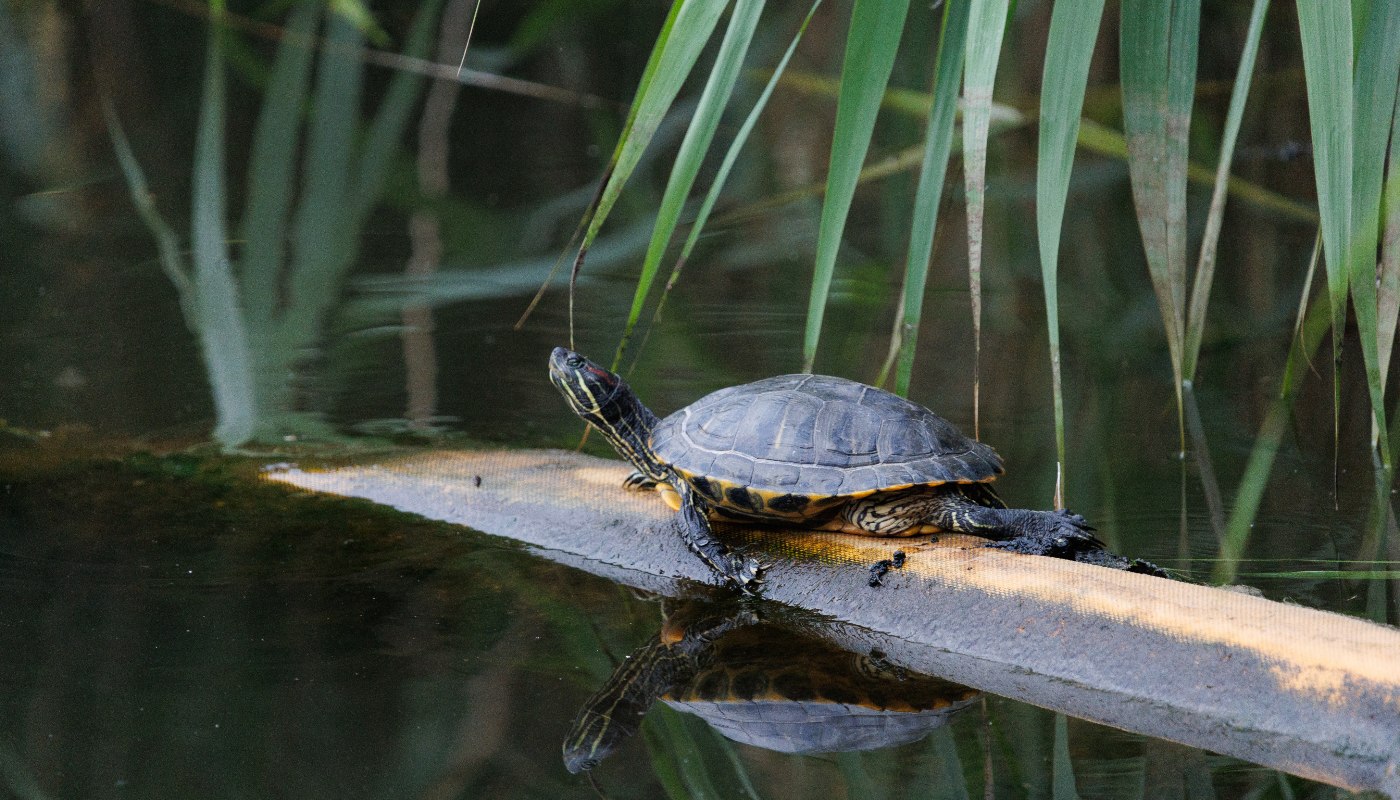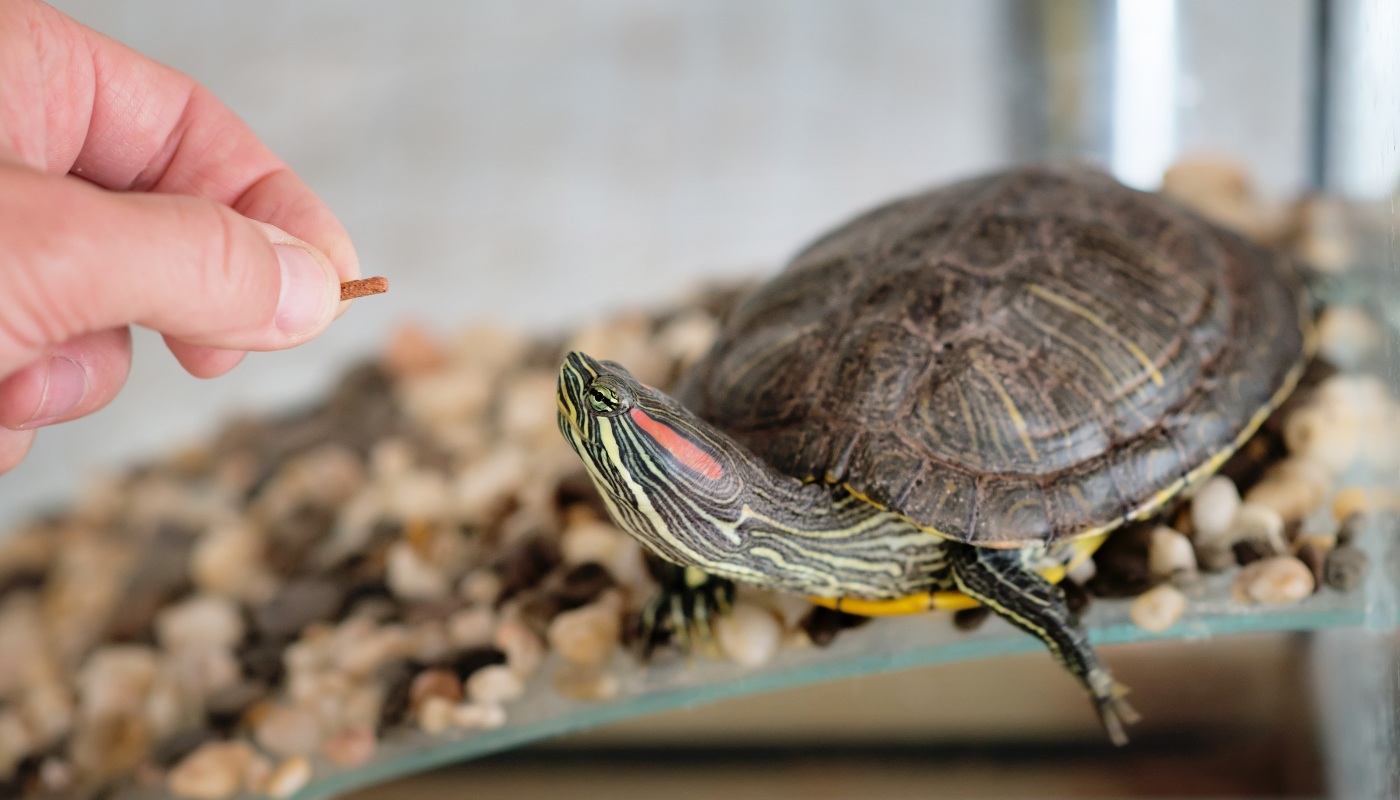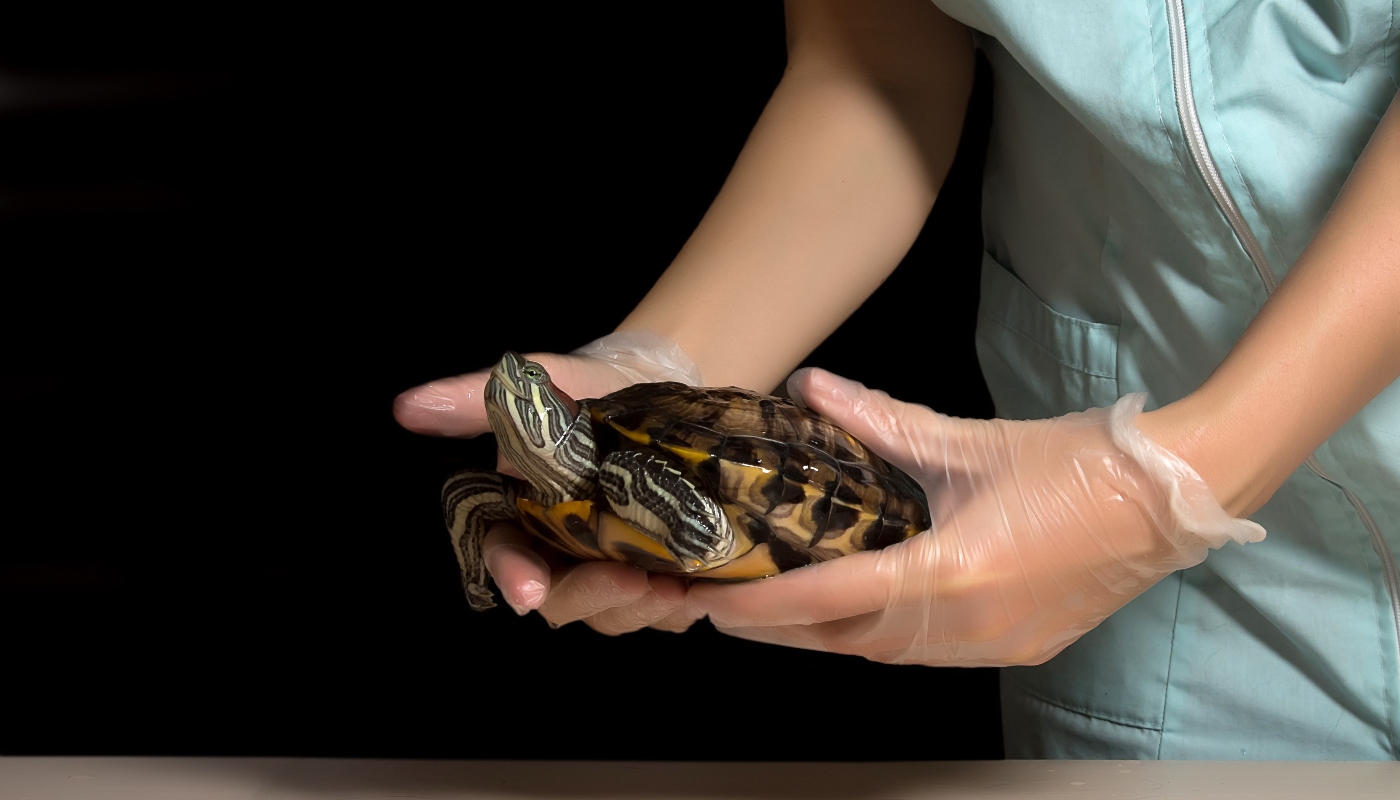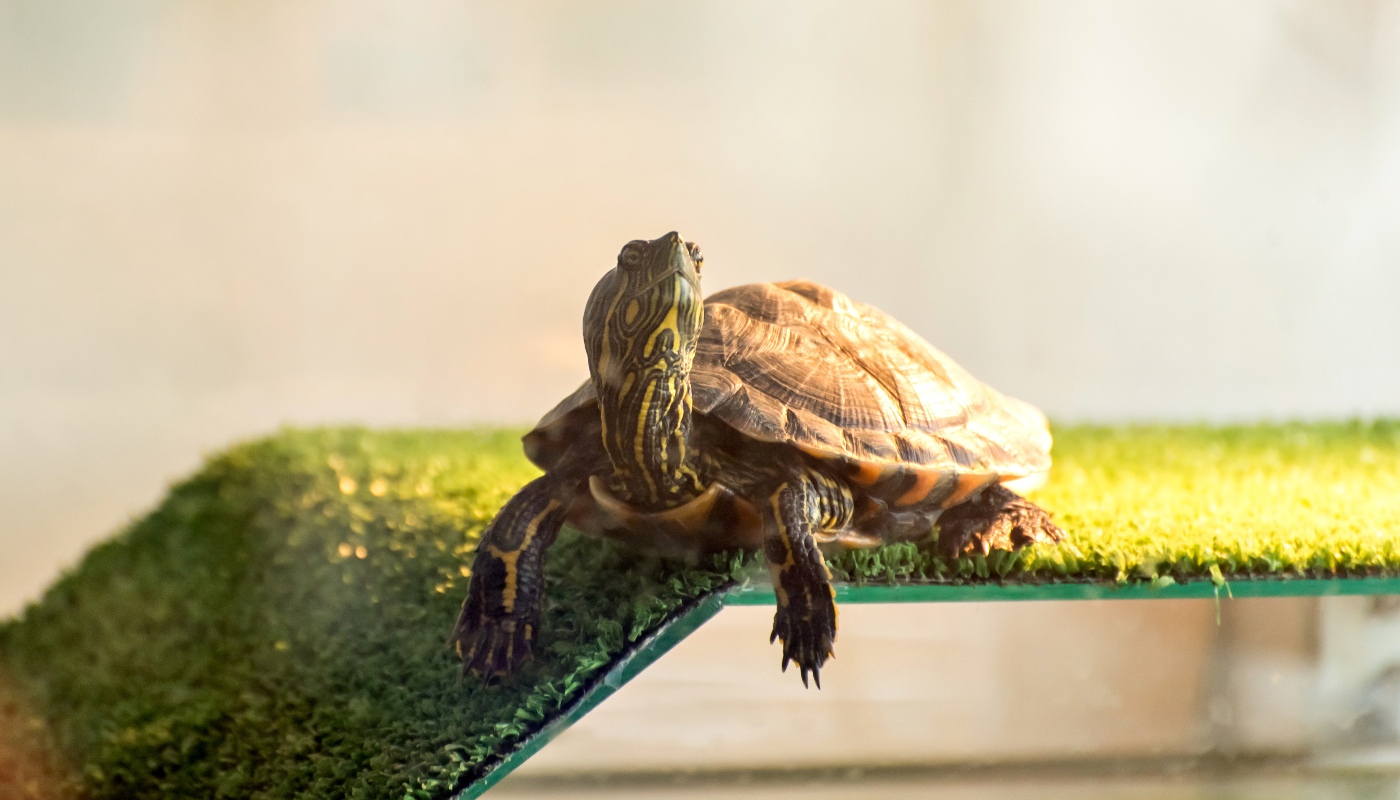Basic terrapin care
We tell you what essential care your terrapins need: from their food to how to clean the terrarium and their shell. Don’t miss this!
pets
Share

Terrapins are one of the calmest pets. Also known as “water tortoises” they originate from the south-eastern United States and northeast Mexico, and they are generally very calm and quiet reptiles. However, like any pet, looking after the terrapins is essential to ensure their health and wellbeing. So much so that with sunlight, good food and the right levels of hygiene terrapins can live up to 50 years!
The majority of terrapins live in freshwater, although some species can also tolerate brackish water. As a general rule, they are very agile swimmers and spend a great deal of time in the water. Their behaviour and size depends on each specific species, but they can reach a length of 40 cm.
What should you feed a terrapin?
It’s understandable that one of the first questions to arise is what to feed such an unusual pet. The terrapin diet is basically omnivorous, so they eat anything from aquatic plants to insect crustaceans as well as other kinds of organic matter. As they eat both plant and animal foods, it is recommended that their diet is as balanced as possible and that it includes elements of both types, such as specific sticks or pellets, Gammarus, mosquito larvae or krill. It is important to feed the terrapin several times a day and to remove any food they don’t eat so that their habitat is kept clean.
Keep in mind that although they love to eat Gammarus (small freeze-dried crustaceans). These have a low nutritional value, so they should never be the basis of their diet but just given as a treat from time to time. As well as the above, you can also feed terrapins invertebrates such as grasshoppers, locust and cockroaches (those sold in specialist shops, of course) or leafy plants such as water lettuce or duckweed (but do not feed them vegetables for human consumption such as corn salad, rocket or escarole).

What diseases might a terrapin suffer from?
Many people think that exotic animals don’t get ill, but there’s nothing further from the truth. There are some very common terrapin diseases that you should be aware of so that you know how your terrapin may be affected by them.
For example, respiratory illnesses are something they could suffer from, as there are viral or bacterial colds that a terrapin may contract. In this sense, symptoms that may raise alarm include nasal secretions, inactivity or reduced appetite.
A terrapin can also suffer from gastrointestinal disease resulting in constipation or diarrhoea. This may be caused by a parasite or other micro-organisms, so it is essential to keep the terrapin in optimal condition in order to reduce the risk of infection as much as possible.
Additionally, the terrapin shell can be a focus for health problems if there are wounds, if the terrapin is not fed well or if there is an appearance of fungus. One of the most common symptoms to indicate there is a problem is that the shell turns white, swells and lifts up.
Just like that of any other pet, the terrapin’s hearing and sight are also potential foci for disease. In the first instance, lumps, such as swollen tissue in the neck area, may appear on the animal’s body. It is also worth checking the terrapin’s eyes and, if any abnormality is seen, take it to a specialist as soon as possible to avoid the issue from becoming more serious.

How do you clean a terrapin shell?
As we have already seen, the shell is very important to a terrapin. Because of this, you need to keep it healthy and well cared for. But how do you clean a terrapin shell?
Firstly, you need is a container, a soft toothbrush and fresh water. Let’s take this one step at a time:
- Fill the container with warm water. The temperature should be around 24 to 30 ºC for the terrapin to enjoy the bath.
- Put the terrapin into the water and use the toothbrush to softly brush the shell using a gentle circular motion.
- Don’t worry if the terrapin hides its head in the shell as a reflex action. There is no need to force it out. It’s better that it feels comfortable.
- Rinse the shell with warm water and try not to wet the terrapin’s head.
- Lastly, its time to dry the shell using toilet paper. Put some newspaper down and allow the terrapin to move freely. Take this opportunity to dry the shell bit by bit and, by doing so, complete the shell cleaning process.

How do you clean the terrapin terrarium?
The terrarium is the terrapin’s home, so it should be very well maintained and looked after. This should be a spacious enclosure with aquatic areas and places in which to rest and sunbathe (it is important that the shell receives sunlight). The recommended depth for the water is that it should be twice the length of the terrapin, as this will allow it to swim comfortably. Another way of measuring this is to use around 40 litres of water per centimetre of shell. You should include rocks, branches, aquatic plants and caves in the terrarium to create areas in which the terrapin can hide and rest.
Lighting is very important. You need to provide ultraviolet light and simulate the day-night cycle. As for temperature, it is recommended that this is between 23 and 25 ºC (you can use an aquarium heater for this). You also need to include a filtration system to keep the water clean and biologically balanced. Always keep in mind that the terrapin terrarium needs to be in good condition, and because of this, it is advisable to regulate the water quality and regularly clean the aquarium.
To clean a terrapin aquarium, follow the steps below:
- Remove the terrapin and put it in a safe and cool place. Terrapins need to leave the aquarium from time to time, so they will enjoy being given this opportunity.
- Remove all the water from the aquarium.
- Using a special scouring pad and specific cleaning products, begin cleaning the whole tank. Clean the base and the walls.
- Rinse thoroughly to remove the last remnants of the cleaning products.
- Add clean water to the aquarium and let it rest for a few minutes.
- Put the terrapin back in, and you could reward it with a snack if it has behaved itself.






